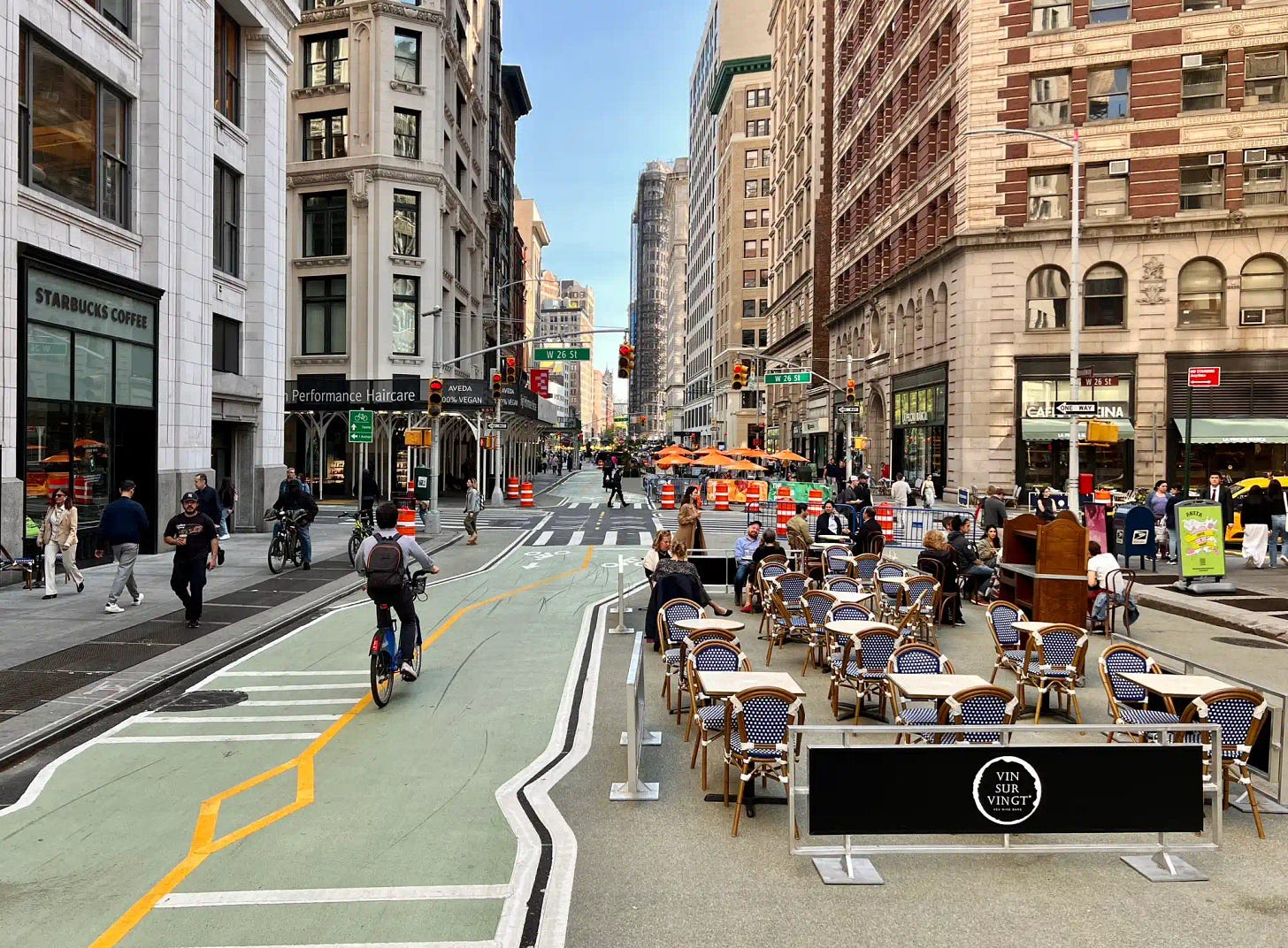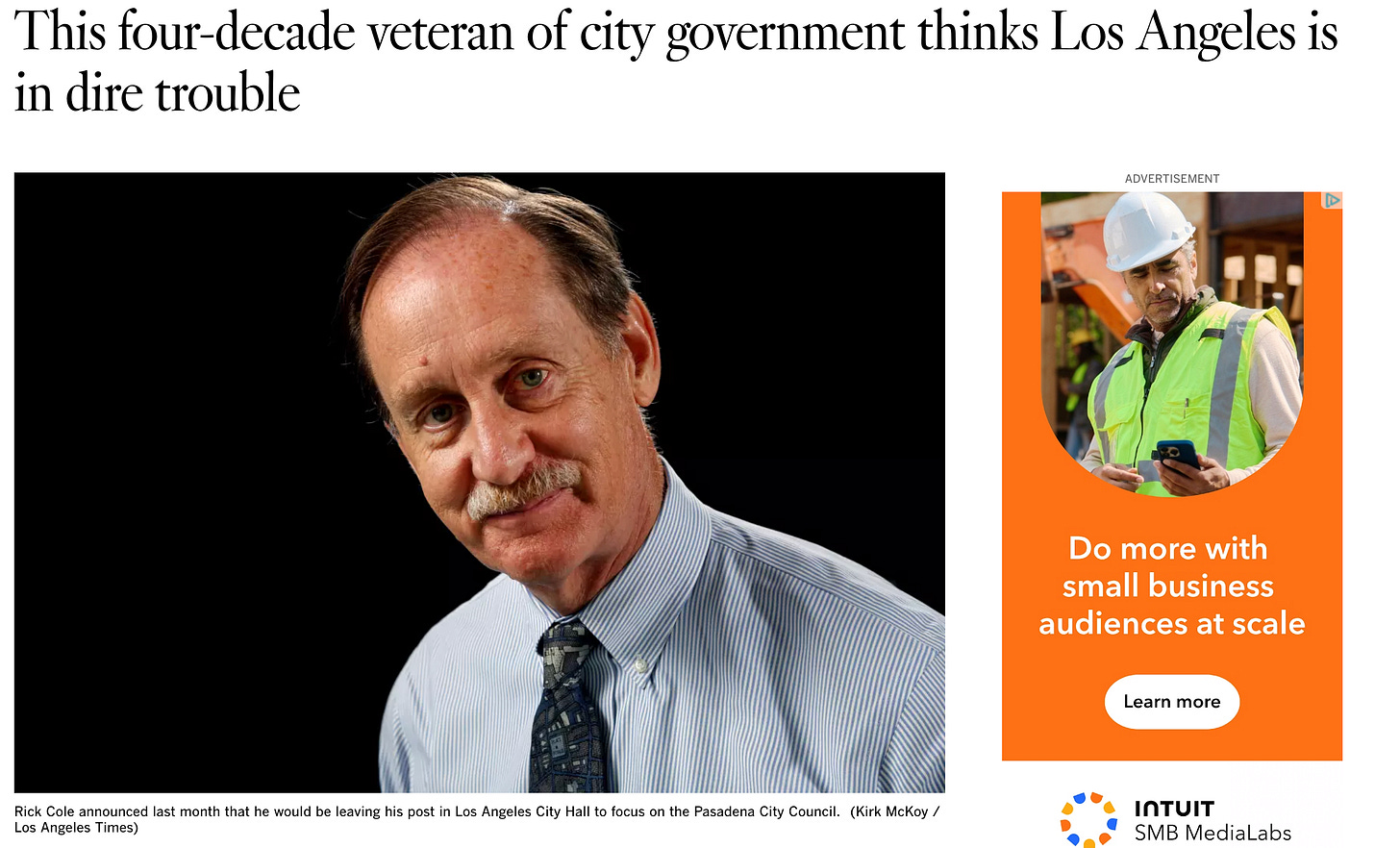Hey readers, I’ve got a few announcements! (Note: if you’re interested in getting the first dibs on invites, I share these announcements with paid subscribers weeks before I share them with the general audience)
Our next book club pick will be Shade: The Promise of a Forgotten Natural Resource by Sam Bloch. We will be discussing the book with the author on August 14 at 6pm. Space is limited, so preorder the book and RSVP for the book club meeting! You can read more about the book and other summer book picks here.
Also, I announced a subscriber-only event in Philadelphia on September 21-22
. Just two spots remain!It is now sold out. The event will include visiting Calder Gardens on its opening day, discussing the Benjamin Franklin Parkway redesign, and an office-to-residential conversion.I’ve added a new Reader Responses section to this newsletter below the paywall for subscribers. I’m hoping to include these pieces written by New Urban Order readers as often as I get good responses. Please feel free to send me your thoughts and writing!
I was recently on LinkedIn when I saw the City of Boston is hiring a Curbside Transformation Manager.
The job description says the position will oversee “new curbside management practices, policies, and technology” and “will also test and evaluate project management and change management strategies, aimed at improving interagency collaboration, public innovation, and testing of new technology and practices to inform an agile and data-oriented curbside management strategy.”
Only an urban policy junkie like me would read this and think: This is amazing.
Our streets are being transformed by autonomous vehicle technology, delivery, and click-and-collect businesses. At the same time, people are clamoring for more public space for recreation and relaxation, more space for bicycles and scooters, and safer streets, particularly for children and those with mobility challenges. It’s clear that the old ways of allocating most of our curb space to parking and most of the roadway to cars will no longer work. But are most cities hiring someone to oversee curbside transformation? No. I’m glad that at least Boston is.
But curbs are just the beginning.
As cities grapple with declining commercial real estate values, they’ll need revenue transformation managers. As cities try to encourage neighborhood density and build housing out of office buildings, they’ll need housing transformation managers. As public spaces work double duty on resilience and social connection, they’ll need public space transformation managers. You get the idea.
Cities have changed a lot over the past five years, and yet city administrations have rarely created not just particular “transformation” roles, but an underlying ethos that is all about adapting to new post-pandemic realities.
In 2010, Boston pioneered the concept of New Urban Mechanics, a reference to the nickname for the city’s Mayor Thomas Menino, that created a “civic research and design team” within City Hall. And former New York Mayor Michael Bloomberg has spearheaded urban innovation through his foundation, Bloomberg Philanthropies, by supporting “I-Teams” that catalyze innovation in cities around the country. Both of these programs have done great work to jumpstart experimentation, pilots, and innovation in cities that have lasting impacts. But isn’t the fact that they still need to exist — that there is a small cadre focused on transformation rather than a job description-level, citywide focus on constantly updating to new conditions — a sign that city’s need a new approach to adapting to the present moment?
Setting Government Up for Transformation
I was recently reading an interview with Rick Cole in the LA Times. Cole has held a slew of roles in local government:
The 72-year-old former mayor (Pasadena), city manager (Ventura, Azusa, Santa Monica) and deputy mayor (Los Angeles) returned for a third stint at Los Angeles City Hall in 2022, bringing a depth of experience to political neophyte and then-newly elected City Controller Kenneth Mejia’s office as Mejia’s chief deputy.
After two and a half years in City Hall East, Cole announced last month that he would be leaving his post to focus on the Pasadena City Council, which he joined again last year.
In his exit interview with the LA Times, Cole reflected on how Los Angeles is in a precarious situation – threatened by climate disasters like the recent Palisades Fire, by a declining entertainment industry, by homelessness, and by a lack of attainable housing.
But yet it seemed to me that the problem with LA wasn’t just these clear and present dangers that Cole listed, but the less apparent problem that city administrative structure is not set up to handle them.
He said, “We’ve fallen behind the private sector in adapting to the new world of advancing technology and changing demographics.”
Further, the city’s org chart isn’t fostering accountability. Cole said:
What I advocated is designing the city to work in the 21st century, which means a chief operating officer who works for the mayor to make sure the city runs effectively across 44 departments. We don’t have such a person now.
It means a chief financial officer. The responsibilities of a chief financial officer are [currently] divided between four different offices in the city, so it’s difficult, again, to point to one person who’s in charge of keeping the city fiscally sound.
Creating a COO and a CFO are not radically new ideas, and often new mayors embark on restructuring roles and lines of responsibility, but Cole comes back to the ultimate problem being the LA city charter written 100 years ago, which intentionally diffused responsibility and power. How do we set cities up for transformation if they are hamstrung by outdated org charts?
Reforming the Administrative State After Elon
Cole’s remarks come at a time when government workers at all levels are under attack from the Trump administration. It’s a hard time to voice concern about administrative problems, and yet to feel ultimately protective and supportive of government.
One of the people who has walked this difficult line is
, author of the book Recoding America, who wrote in a Substack piece:DOGE has made it both impossible not to talk about government reform, and impossible to talk about it.
She is now helping to spearhead a new fund that will help reform the administrative state.
The Recoding America Fund (RAF) is a six-year, $120 million philanthropic fund (501c3) to reform the administrative state at the federal and state levels and expand American capacity and competitiveness. RAF’s work is grounded in a board-defined vision to restore the core capabilities of government and move to a new operating model—the right people, doing the right work, with purpose-fit systems and test-and-learn frameworks—so it can reliably deliver on its goals. The fund seeks to help build an ideologically diverse field of state capacity organizations, connect them to each other, fill in the gaps, and help them set ambitious common goals to drive transformational change across all levels of government in this time of unprecedented disruption. We believe that change is coming to our change-averse public institutions, and now is the time to shape that change in the public interest. That ambitious task cannot be the work of just one party or faction.
There are a bunch of phrases and concepts here that give me confidence, like reliably delivering on goals and transformational change in the public interest. It’s too bad this fund is only working at the state and federal levels. We need it at the local level. Indeed, at the lowest level — at the curb.
Reader Response
As I mentioned at the top, I’m starting a new subscriber-only section to the newsletter where I publish some of the most thoughtful responses to New Urban Order content. This week, we’ve got a great piece by Nick Aster in response to my article on the lack of “complete” public spaces.
His take? Let’s Talk About Pissoirs: The Unsung Hero of Urban Design.









